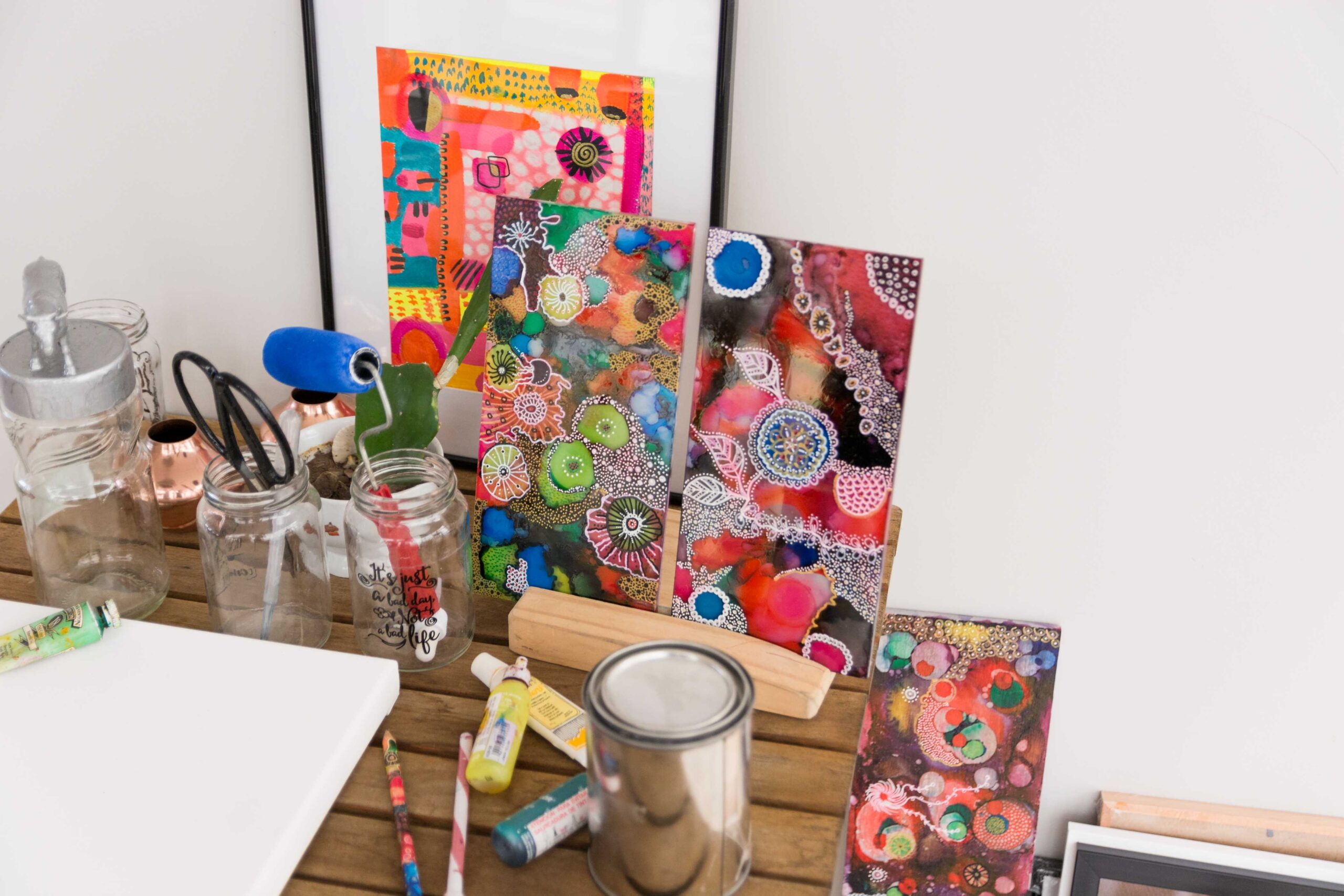Proper storage is essential for preserving the value and integrity of artwork. Whether it’s a cherished family painting or a valuable collection, artwork requires special care to remain in pristine condition. Without proper storage, artwork is at risk of damage from environmental factors like temperature changes, humidity, and physical impact.
Common risks include warping, cracking, fading, and mould growth. These issues can arise if the artwork is not stored in a controlled environment. Improper packing or using the wrong materials can also lead to tears, scratches, or stains. Each of these risks can severely diminish the artwork’s value and aesthetic appeal.
This blog provides art storage tips on how to prepare, pack, and store artwork in a self-storage unit. By following these guidelines, you can ensure that your artwork is protected and preserved for years to come.
1. Choosing the Right Storage Unit
- Climate Control:
Critical for Preservation: A climate-controlled storage unit is crucial for preserving artwork, as it maintains a stable environment with consistent temperature and humidity levels.
Protection Against Damage: Without climate control, artwork is susceptible to warping, cracking, and mould growth due to fluctuating temperatures and humidity.
Long-term Care: Investing in climate control ensures the artwork remains in its original condition, preventing deterioration over time.
- Security Features:
Essential for Safety: Choose a storage facility that prioritises security with advanced features such as surveillance cameras, alarm systems, and controlled access.
Peace of Mind: Knowing that your valuable artwork is stored in a secure location minimises the risk of theft or damage.
Insurance Considerations: A secure facility may also be required by insurers, ensuring your artwork is adequately covered.
- Accessibility:
Regular Monitoring: Opt for a storage unit that is easily accessible, allowing you to check on your artwork periodically.
Preventative Care: Regular visits help you identify potential issues early, such as environmental changes or pests.
Ease of Access: Consider the location of the unit within the facility, ensuring it is convenient for both loading and unloading artwork.
2. Preparing Artwork for Storage
Pre-storage Cleaning:
(i) Preventative Cleaning: Thoroughly clean artwork before storage to remove dust, dirt, and any residues that could attract pests or cause long-term damage.
(ii) Professional Consultation: For delicate or valuable pieces, consult a professional conservator to ensure proper cleaning methods are used, preventing inadvertent damage.
(iii) Long-term Storage Considerations: Ensure that the artwork is completely dry before packing to avoid mould or mildew.
Documentation:
- Detailed Inventory:
(i) Photographic Records: Take high-quality photographs of each piece of artwork, capturing various angles and details to document its current condition.
(ii) Comprehensive Records: Maintain a detailed inventory that includes the artwork’s title, artist, dimensions, condition notes, and any special instructions for handling.
(iii) Insurance and Reference: This documentation is essential for insurance purposes and will serve as a reference if you need to assess the artwork’s condition in the future.
3. Packing Materials and Techniques
Proper Wrapping:
(i) Acid-Free Paper: Use acid-free paper to wrap the artwork, preventing discolouration or chemical reactions that can damage the piece over time.
(ii) Bubble Wrap and Corners: Add layers of bubble wrap for cushioning, and use protective corners to safeguard frames and edges.
(iii) Sturdy Packaging: Choose strong, appropriately sized boxes or crates that provide ample protection and prevent movement during storage.
Framed vs. Unframed Art:
- Specific Packing Techniques:
(i) Framed Art: For framed pieces, secure the glass with tape to prevent shattering. Wrap the frame in bubble wrap, ensuring that all corners are protected.
(ii) Unframed Art: For unframed pieces, use glassine paper to cover the artwork, protecting it from scratches and dust. Roll or flat-pack the artwork depending on its size and fragility.
(iii) Custom Solutions: Consider custom crates or storage solutions for particularly valuable or irregularly shaped pieces.
Avoiding Common Mistakes:
- Critical Do’s and Don’ts:
(i) Avoid Newspaper: Never use newspaper for wrapping, as the ink can transfer and damage the artwork.
(ii) Plastic Wrap Caution: Do not wrap artwork directly in plastic, as it can trap moisture and lead to mould or mildew.
(iii) Proper Stacking: Avoid stacking artwork without proper separators, as pressure and contact can cause damage.
4. Organising Artwork in the Storage Unit
Vertical Storage for Framed Pieces:
- Optimal Positioning:
(i) Vertical Placement: Store framed artwork vertically to prevent undue pressure on the glass and frame, reducing the risk of breakage or warping.
(ii) Use of Racks: Invest in shelving or racks specifically designed for artwork storage, which helps maintain organisation and provides additional protection.
Spacing and Labelling:
- Efficient Organisation:
(i) Adequate Spacing: Ensure there is sufficient space between each piece of artwork to prevent accidental damage from contact.
(ii) Clear Labelling: Label each piece clearly, indicating its contents and orientation (e.g., “Top,” “Fragile”). This simplifies retrieval and helps maintain order within the storage unit.
Avoiding Direct Contact with Floors and Walls:
- Preventative Measures:
(i) Off the Ground: Use pallets or shelves to elevate artwork off the floor, protecting it from potential water damage or pests.
(ii) Away from Walls: Keep artwork away from walls to avoid condensation, which can lead to moisture damage. Proper spacing ensures air circulation and reduces the risk of mould.
5. Regular Maintenance and Checks
Routine Inspections:
- Ongoing Vigilance:
(i) Regular Checks: Visit the storage unit periodically to inspect the artwork for any signs of deterioration, such as fading, warping, or mould.
(ii) Environmental Monitoring: Check the climate control settings and ensure the storage environment remains stable. Any fluctuations should be addressed immediately.
(iii) Pest Control: Look for any signs of pests or insects that could damage the artwork.
Updating Documentation:
- Consistent Record Keeping:
(i) Inventory Updates: Update your inventory and condition records during each visit, noting any changes in the artwork’s condition.
(ii) Insurance Compliance: Ensure that your documentation aligns with insurance requirements, providing proof of the artwork’s condition and value.
(iii) Long-term Planning: Use these updates to plan for any necessary conservation work or adjustments in storage techniques.
Read More: How to Store Gym Equipment in Storage Unit
Conclusion
In summary, choosing the right storage unit is crucial for preserving your artwork. Opt for a climate-controlled unit to maintain stable temperature and humidity. Ensure the facility has strong security features to protect against theft and damage.
Check the condition of your artwork periodically and update your inventory records. Address any issues promptly to ensure long-term preservation.
Investing in proper storage solutions is vital to maintaining your artwork’s value and condition. Explore storage options designed specifically for artwork preservation to safeguard your valuable pieces.
Ensure your artwork receives the best possible care by choosing the right storage solution. So don’t wait—book a storage unit for your artwork now and ensure its preservation and protection for the long term. With the right storage, your valuable pieces will be safe from environmental damage, keeping their beauty intact.
FAQs
Q: What are the best storage units for artwork?
The best storage units for artwork are climate-controlled ones. Units with security features like CCTV monitoring, alarm systems, and limited access also help safeguard valuable pieces.
Q How long can I store artwork in a self-storage unit?
Artwork can be stored for extended periods in a self-storage unit, especially if it is properly packed. However, it’s advisable to periodically check the condition of your artwork to ensure no issues arise over time.
Q: what will be the cost of a storage unit?
The standard cost of a storage unit varies depending on several factors, including location, unit size, and whether it is climate-controlled.
Q: Are there any hidden costs involved in storing artwork in a self-storage unit?
Apart from the monthly rental fee, additional costs may include insurance to cover your artwork, or charges for a climate-controlled unit. Some facilities also offer long-term rental discounts, so it’s worth asking about potential savings to manage overall costs.
Q: Is Storage Insurance important?
Adding insurance coverage for your artwork can help protect your investment in case of accidental damage, theft, or natural disasters. This will increase your overall storage cost but offers peace of mind.




